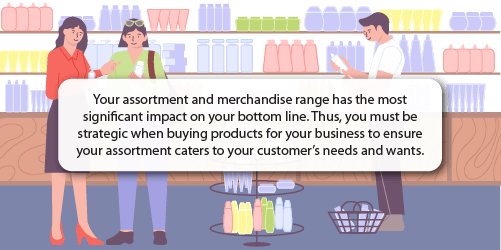Cross-merchandising is a powerful retail strategy that involves placing related products together to drive sales and enhance the shopping experience for customers. By strategically positioning complementary items alongside each other, retailers can increase impulse buys, upsell products, and create a cohesive shopping environment that encourages customers to explore and purchase more. In this blog post, we will explore the art of cross-merchandising and how it can contribute to retail success.
The Benefits of Cross-Merchandising
One of the key advantages of cross-merchandising is its ability to boost impulse buys from customers. When products that complement each other are placed together, shoppers are more likely to add additional items to their cart on impulse. For example, displaying batteries next to electronic devices or pairing wine with cheese in the grocery aisle can prompt customers to make additional purchases they hadn’t planned on.
In addition to driving impulse buys, cross-merchandising also enhances the shopping experience for customers. By grouping related products together, retailers can make it easier for shoppers to find everything they need in one place, saving them time and effort. This convenience can lead to a more positive shopping experience and increase customer satisfaction.
Furthermore, cross-merchandising helps to build relationships between products and encourages upselling. By showcasing complementary items in close proximity, retailers can suggest additional purchases that enhance the primary product. For example, suggesting matching accessories with clothing items can encourage customers to buy a complete outfit rather than just a single item.
Examples of Successful Cross-Merchandising Strategies
There are numerous examples of successful cross-merchandising strategies that retailers can implement to drive sales and enhance the shopping experience. One common approach is to display batteries next to electronic devices such as remote controls or toys. By placing batteries in close proximity to these products, retailers can prompt customers to purchase them together, increasing convenience for shoppers and driving additional sales.
In the grocery aisle, pairing wine with cheese is another effective cross-merchandising strategy. By positioning these two complementary items together, retailers can inspire customers to create a complete meal or entertainment spread, leading to increased sales of both products.
Similarly, suggesting matching accessories like belts, jewelry, or shoes with clothing items can encourage customers to purchase a complete outfit rather than just a single garment. By showcasing these related products together, retailers can upsell and cross-sell items, boosting overall sales.
Tips for Effective Cross-Merchandising
Implementing cross-merchandising strategies requires careful planning and execution. To ensure success, retailers should consider the following tips:

Image courtesy of www.dotactiv.com via Google Images
Understand your target audience and their buying habits to determine which products are likely to be purchased together.
Rotate product placement regularly to keep displays fresh and engaging for customers. This can help to capture the attention of shoppers and increase sales.
Utilize signage, promotions, and product bundling to draw attention to related products and encourage customers to make additional purchases. Highlighting the benefits of purchasing complementary items together can drive sales and improve the overall shopping experience.
Case Studies of Brands Implementing Cross-Merchandising
Several retail chains have successfully implemented cross-merchandising strategies to drive sales and enhance customer engagement. By strategically placing related products together and leveraging effective signage and promotions, these brands have seen significant increases in revenue and customer satisfaction.
For example, a clothing retailer may showcase coordinating accessories such as scarves or handbags alongside their clothing items, encouraging customers to purchase a complete outfit. By cross-merchandising these items, the retailer can increase the average transaction value and provide a more cohesive shopping experience for customers.
In the grocery sector, many supermarkets have implemented cross-merchandising strategies to encourage customers to purchase related food items together. By pairing items like pasta and pasta sauce or chips and dip, retailers can increase sales and streamline the shopping process for customers.
Future Trends in Cross-Merchandising
As technology continues to advance, the future of cross-merchandising is likely to see innovations in data analysis and targeted product placements. Retailers can leverage data analytics to understand customer behavior and preferences, allowing them to optimize product placement strategies for increased sales and customer engagement.
Furthermore, the rise of e-commerce and online retail presents new opportunities for cross-merchandising. Online retailers can use personalized recommendations and product bundling to suggest complementary items to customers, replicating the in-store experience and driving additional sales.
Wrapping Up
Cross-merchandising is a powerful retail strategy that can significantly impact sales and customer satisfaction. By strategically placing related products together, retailers can drive impulse buys, upsell products, and enhance the overall shopping experience for customers. As consumer preferences and shopping habits continue to evolve, implementing effective cross-merchandising strategies will be essential for retailers looking to succeed in today’s competitive market.



